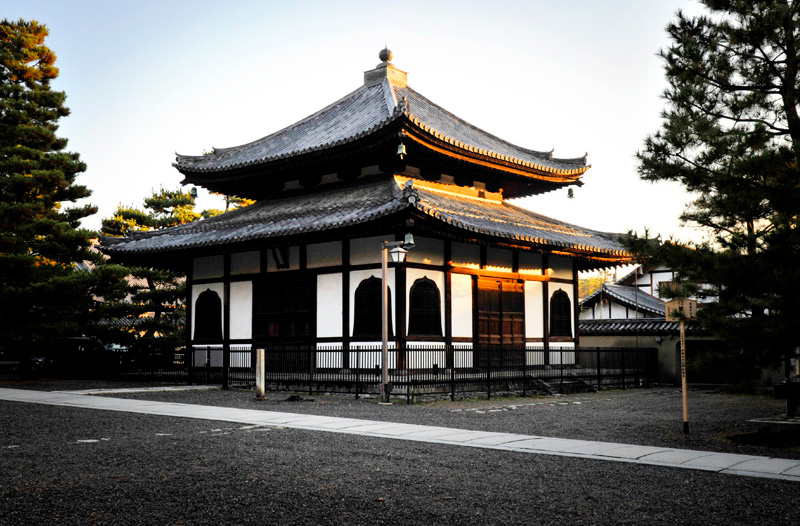Experience the Heart of Kyoto’s Largest Zen Temple Complex
Myoshinji Temple is a vast temple complex in northwestern Kyoto, encompassing about 50 subtemples and main buildings. As the head temple of the Myoshinji school of Rinzai Zen Buddhism, it boasts over 3,000 affiliated temples and is renowned as Japan’s largest Zen temple. This sacred ground offers not only a deep dive into Zen practice but also a chance to immerse yourself in traditional Japanese culture and admire exquisite gardens.
Key Points for Visiting Myoshinji:
- Founded in 1337, converted from an imperial villa
- Large complex with over 50 subtemples
- Headquarters of the Myoshinji school of Rinzai Zen
- Numerous historic buildings and beautiful gardens
- Unique Zen atmosphere and cultural experience
A Rich History, A Zen Sanctuary
Myoshinji was established in 1337 when an abdicated emperor, Go-Daigo, converted his imperial villa into a Zen temple. As the head temple of the Myoshinji school of Rinzai Zen, it holds a significant place in Japanese Zen history. Over the past 700 years, Myoshinji has grown into the expansive complex we see today, becoming one of the most representative Zen sanctuaries in Kyoto and Japan.
Main Attractions Detailed
Sanmon Gate, Butsuden, and Hatto Hall
The main buildings of Myoshinji are located near the southern gate, consisting of the Sanmon Gate, Butsuden (Buddha Hall), Hatto Hall, and Ohojo. While the Sanmon Gate and Butsuden are designated important cultural properties, they can only be viewed from the outside. The Hatto Hall is open to visitors and features a giant ceiling painting of a dragon that appears different from various angles. It also houses one of Japan’s oldest temple bells, dating back to the 7th century.
Ohojo
The Ohojo is one of Myoshinji’s main buildings and serves as the abbot’s quarters. Although usually closed to the public, its interior and garden may be open for viewing during specific periods.
Taizoin Temple
Taizoin is the most famous subtemple within Myoshinji. It boasts a beautiful pond garden constructed in the mid-1960s, considered one of the best gardens of the Showa Period (1926-1989). Its rock garden, designed in the 15th century by the renowned painter Kano Motonobu, is another highlight. The temple also houses a valuable 15th-century painting depicting a Buddhist parable.
Keishunin Temple
Keishunin Temple offers visitors several gardens to explore and an attractive tea room, perfect for enjoying the scenery in a relaxed setting.
Daishinin Temple
Although the smallest of the open subtemples, Daishinin features an attractive rock garden, a peony garden, and simple temple rooms.
Best Time to Visit
Myoshinji is open year-round, with each season offering its unique charm. Spring brings cherry blossoms, while autumn offers stunning foliage. To avoid crowds, consider visiting early in the morning or later in the afternoon.
Getting There
Myoshinji is a 5-minute walk from JR Hanazono Station (10 minutes, 200 yen from Kyoto Station) or a 3-minute walk from Myoshinji Station on the Keifuku Kitano Line. Ryoanji Temple is a 10-15 minute walk from Myoshinji.
Hours and Admission Fees
- Hatto Hall: 9:00-12:00, 13:00-16:00 (last entry 15:30), open daily, 700 yen
- Taizoin Temple: 9:00-17:00, open daily, 600 yen
- Keishunin Temple: 9:00-17:00 (until 16:30 from November to February), some irregular closing days, 400 yen
- Daishinin Temple: 9:00-17:00, some irregular closing days, 300 yen
Visitor Tips
- Wear comfortable shoes for walking around the complex
- Respect temple etiquette and maintain a quiet atmosphere
- Be mindful of photography rules; some areas may prohibit photos
- Opening hours may vary by season, so check in advance
- Consider participating in zazen meditation sessions offered by the temple
Official Websites
Conclusion
Myoshinji Temple is an unmissable Zen sanctuary in Kyoto, offering not only a rich history and cultural heritage but also a tranquil space to experience Zen wisdom away from the bustle of city life. Whether you’re interested in traditional Japanese culture or seeking inner peace, Myoshinji promises an unforgettable experience. Step into this ancient temple complex, feel the profound wisdom of Zen, and let your spirit soar amidst the interplay of history and nature.
